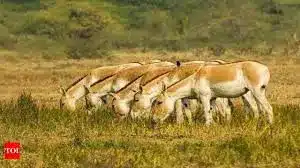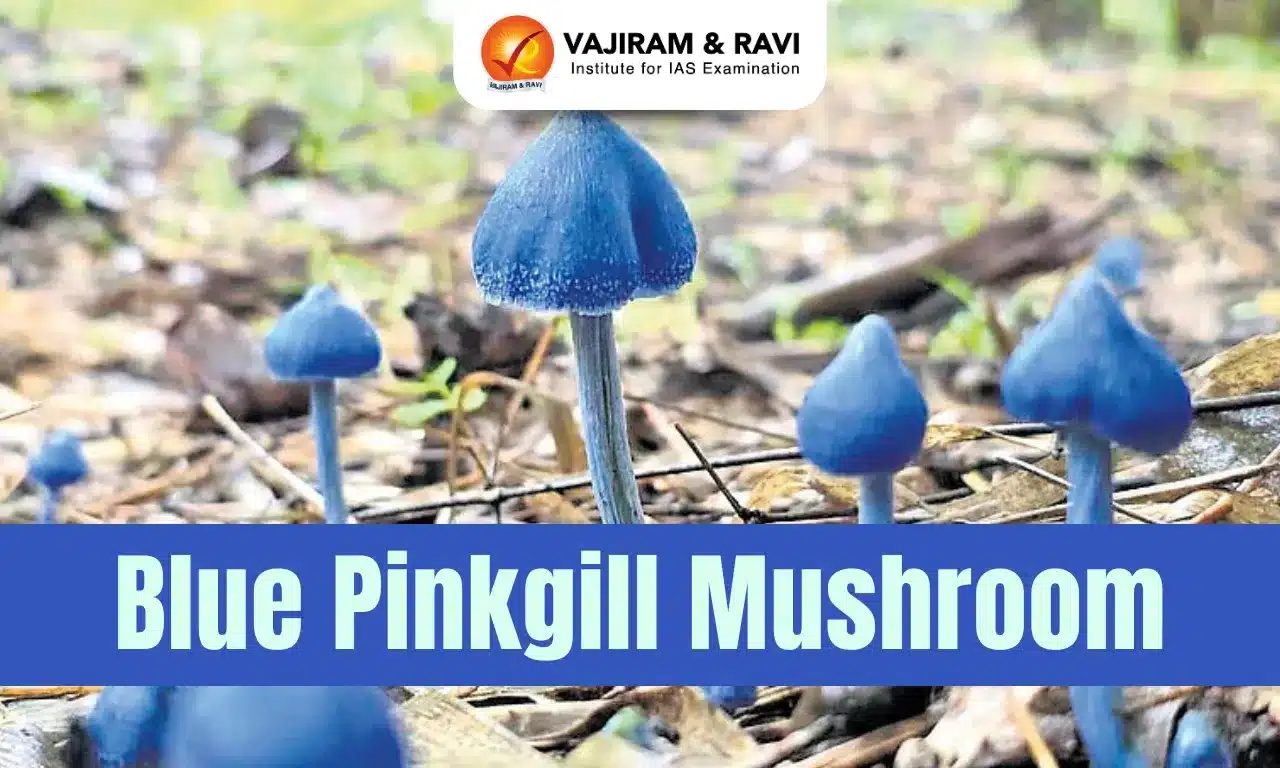About Banni Grasslands
- It is located along the northern border of Kachchh district in the state of Gujarat.
- The Banni is also home to 22 ethnic groups, the majority of whom are pastoralists.
- It is home to great biological diversity, having 37 grass species, 275 bird species, and domesticated animals like Buffalo, Sheep, Goat, Horses and Camel, as well as wildlife.
- The Kutch Desert Wildlife Sanctuary and Chhari Dhand Conservation Reserve are part of the Banni Grasslands.
- Flora: The vegetation here mainly comprises Prosopis Juliflora, Cressa critica, Cyperus spp, Sporobolus, Dichanthium, and Aristida.
- Fauna:It is home to mammals such as the Nilgai, Chinkara, Blackbuck, Wild boar, Golden Jackal, Indian Hare, Indian Wolf, Caracal, Asiatic Wildcat and Desert Fox etc.
Key facts about Grasslands
- These are one of the largest ecosystems in the world.
- They are distributed mainly in semiarid and arid areas, and include savannahs, grassy shrublands, and open grasslands.
- Ecological benefits: They harbour a large number of unique and iconic species and offer a variety of material and intangible advantages to people, including several ecosystem services such as carbon storage, climate mitigation, and pollination.
- Threats: They face the problem of degradation due to deforestation, overgrazing, agriculture, urbanisation, and other natural and human-made reasons. As much as 49% of grassland areas worldwide are estimated to be experiencing degradation.
- In India, grasslands account for approximately eight lakh sq. km, or about 24% of the country’s total land area (32.8 lakh sq. km).
Q1: What is Savanna grassland?
It is a vegetation type that grows under hot, seasonally dry climatic conditions and is characterized by an open tree canopy above a continuous tall grass understory (the vegetation layer between the forest canopy and the ground).
Source: How the Banni grasslands of Kachchh, Gujarat can be restored
Last updated on July, 2025
→ UPSC Notification 2025 was released on 22nd January 2025.
→ UPSC Prelims Result 2025 is out now for the CSE held on 25 May 2025.
→ UPSC Prelims Question Paper 2025 and Unofficial Prelims Answer Key 2025 are available now.
→ UPSC Calendar 2026 is released on 15th May, 2025.
→ The UPSC Vacancy 2025 were released 1129, out of which 979 were for UPSC CSE and remaining 150 are for UPSC IFoS.
→ UPSC Mains 2025 will be conducted on 22nd August 2025.
→ UPSC Prelims 2026 will be conducted on 24th May, 2026 & UPSC Mains 2026 will be conducted on 21st August 2026.
→ The UPSC Selection Process is of 3 stages-Prelims, Mains and Interview.
→ UPSC Result 2024 is released with latest UPSC Marksheet 2024. Check Now!
→ UPSC Toppers List 2024 is released now. Shakti Dubey is UPSC AIR 1 2024 Topper.
→ Also check Best IAS Coaching in Delhi















